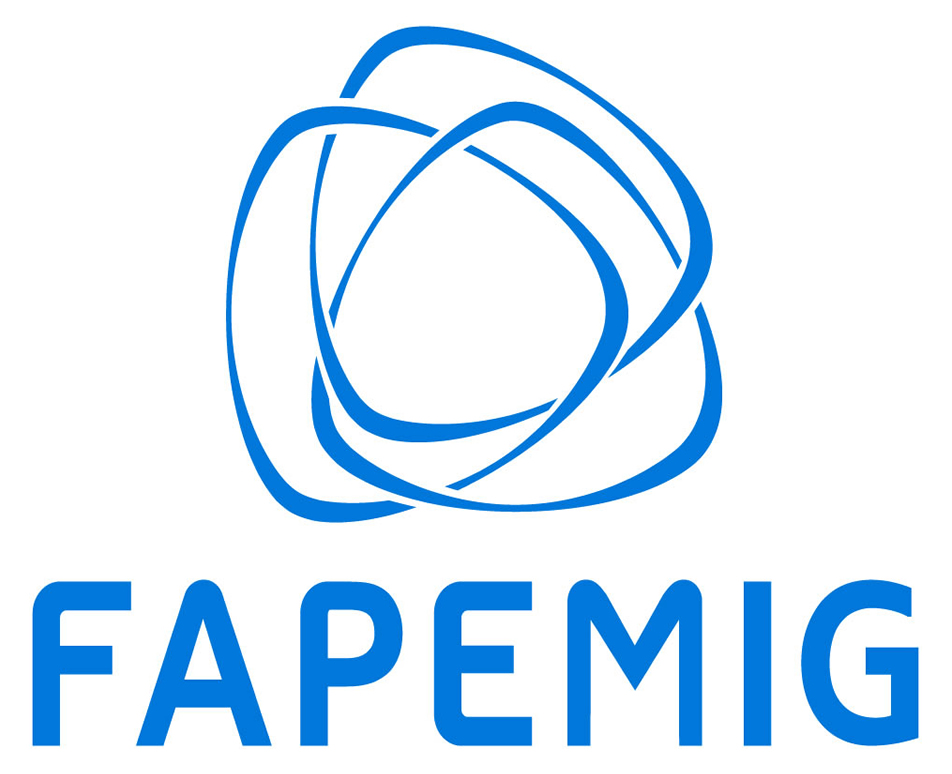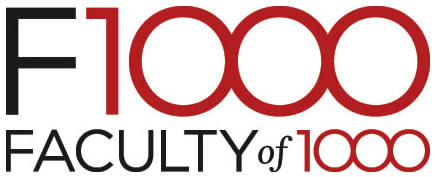Posters
| Category 'H'- Genome Organization and Annotation' |
| Poster - H01 |
| Identification of miRNA-related Transposable Elements in Plant Genomes |
| Alan Lorenzetti, Universidade Estadual de Londrina / Instituto Agronômico do Paraná / Universidade Tecnológica Federal do Paraná, Brazil |
| Alexandre Paschoal, Universidade Tecnológica Federal do Paraná, Brazil Douglas Domingues, Instituto Agronômico do Paraná, Brazil |
| Short Abstract: This work shows a genome-wide assay of relation between transposable elements and microRNAs in ten public plant genomes. For that, positional intersection analysis was applied on genomic features obtained from a microRNA and a repetitive element databases. Results will be used to future development of a new database. |
| Poster - H02 |
| Genetic Pathway Interaction In Celular Cicle, Repair of DNA Damage and Apoptosis with Colon Adenoma |
| Sylvio Vieira, Sylvio Vieira, Brazil |
| Eder Simão, Centro Universitario Franciscano, Brazil |
| Short Abstract: Bioinformatics corresponds to applying the techniques of computing for the analysis of information related to biology. Thus, computers can be used to store, analyze and integrate biological and genetic information database. Thus it is possible to improve understanding of biological interactions, including metabolic diseases (HEIDEN et al., 2009). |
| Poster - H03 |
| Unraveling novel conserved RNAs on synteny regions in the Rhizobia genome |
| Eddie Imada, Universidade Estadual de Londrina, Brazil |
| Elisete Pains Rodrigues, Universidade Estadual de Londrina, Brazil Alexandre Rossi Paschoal, Universidade Tecnologica Federal do Paraná, Brazil |
| Short Abstract: We developed a pipeline to predict functional RNAs through intergenic regions synteny among closely related species, using a support vector machine to classify these IGRs as RNA and structure conservation to annotate these sequences. |
| Poster - H04 |
| Identification of small INDELs within human exons using transcriptome data: preliminary results. |
| Gabriel Wajnberg, Instituto Nacional de Câncer, Brazil |
| Carlos Gil, Instituto Nacional de Câncer, Brazil Fabio Passetti, Instituto Nacional de Câncer, Brazil |
| Short Abstract: Our research group conducted a prospection using human expressed sequence tags (ESTs) to mapped onto the human reference genome to find small deletions. We identified novel and known small deletions, some of them were already described by the 1000 genomes and also in the literature. |
| Poster - H05 |
| MENGOFams: HMM profiles to facilitate annotation propagation of microbial protein families related to bionergy |
| Fernanda Orpinelli, University of São Paulo, Brazil |
| Lucas Taniguti, University of São Paulo, Brazil Claudia Vitorello, University of São Paulo, Brazil João Carlos Setubal, University of São Paulo, Brazil |
| Short Abstract: Hidden Markov Models (HMMs) are essential tools for automated annotation of protein sequences.Manually curated protein family HMMs remain the gold standard for use in genome annotation. Here we present results concerning the generation and curation of more than 70 HMMs of microbial protein families of bioenergy interest. |
| Poster - H06 |
| Mitochondrial Genome Assembly of the Guzerá Breed |
| Juliana Geraldo, Centro de Pesquisas René Rachou, Brazil |
| Izinara Cruz, Centro de Pesquisas René Rachou, Brazil Francislon Oliveira, Centro de Pesquisas René Rachou, Brazil Flávio Araújo, Centro de Pesquisas René Rachou, Brazil Marcos Silva, EMBRAPA, Brazil Maria Carvalho, Universidade Federal de Minas Gerais, Brazil Guilherme Oliveira, Centro de Pesquisas René Rachou, Brazil |
| Short Abstract: Changes in the mitochondrial genome can lead to effects on cellular metabolism, and consequently on reproductive performance and/or milk or meat production. This study aimed at assembling the mitochondrial genome (mtDNA) of Guzerá breed (Bos taurus indicus) to improve the understanding of the mtDNA molecular diversity in the Bos genus. |
| Poster - H07 |
| A MACHINE LEARNING APPROACH FOR RECLASSIFICATION OF PROTEINS: STUDY CASE Azospirillum brasilense Putative arsenate reductase “DraB” PROTEI |
| Bruno Nichio, Federal University of Paraná, Brazil |
| Elisa Terumi Rubel, UFPR, Brazil Alexandre Quadros Lejambre, UFPR, Brazil Roberto Tadeu Raittz, UFPR, Brazil Fábio de Oliveira Pedrosa, UFPR, Brazil |
| Short Abstract: Azopirillum brasilense is a nitrogen-fixing bacteria used as bio-fertilizer in agriculture. The draB gene, present in this bacteria, may be indirectly related to this enzyme activity regulation by the post-translational control. We propose a general approach of data mining to the reclassification of hypothetical proteins using the NCBI GenBank database, the Blast tool, k-means algorithm. |
| Poster - H09 |
| Draft genome sequence of the antioxidant-rich plant Maqui Berry (Aristotelia chilensis) |
| Vinicius Maracaja-Coutinho, Universidad Mayor, Chile |
| Mindy Muñoz Universidad Mayor, Chile Javier Villacreses, Universidad Mayor, Chile Marcelo Rojas-Herrera, Universidad Mayor, Chile Ingrid Ramírez, Universidad Mayor, Chile Patricio Manque, Universidad Mayor, Chile Vinicius Maracaja-Coutinho, Universidad Mayor, Chile Victor Polanco, Universidad Mayor, Chile |
| Short Abstract: Aristotelia chilensis, is a native plant specie from Chile. The present study was designed to obtain the first draft sequence and initial characterization of Maqui genome, using high-throughput DNA sequencing. We identified 28,797 protein-coding genes will provide a rich catalogue of genes of this antioxidantrich compounds plant. |
| Poster - H10 |
| Whole genome sequencing and annotation of probiotic strains Saccharomyces boulardii and S. cerevisiae UFMG A-905. |
| Thiago Mafra Batista, Federal Univerity of Minas Gerais, Brazil |
| Ieso Castro, UFOP, Brazil Flavio Araujo, Fiocruz, Brazil Ana Salim, Fiocruz, Brazil Danielle Cardoso, UFMG, Brazil Flaviano Martins, UFMG, Brazil Rogelio Brandao, UFOP, Brazil Marcela Drummond, Myleus Biotechnology, Brazil Guilherme Oliveira, Fiocruz, Brazil Carlos Rosa, UFMG, Brazil Jacques Nicoli, UFMG, Brazil Gloria Franco, UFMG, Brazil |
| Short Abstract: The assembly of the S.boulardii and S.cerevisiae UFMG905 genomes (probiotic strains) generated 16 scaffolds and 83 and 194 contigs for Sb and 905. A automatic annotation revealed 5,359 and 5,232 ORFs. The evolutionary history inferred by NJ with 442 orthologous proteins from 20 Saccharomyces strains was geographical and biochemically consistent. |
| Poster - H11 |
| The complete genome sequence of Streptococcus agalactiae strain GBS85147 |
| Edgar Aguiar, Universidade Federal de Minas Gerais, Brazil |
| Diego Cesar Batista Mariano, Universidade Federal de Minas Gerais, Brazil Leticia Castro Oliveira, Universidade Federal de Minas Gerais, Brazil Lucas Amorim Gonçalves, Universidade Federal de Minas Gerais, Brazil Alberto Junior Oliveira, Universidade Federal de Minas Gerais, Brazil Flávia de Souza Rocha, Universidade Federal de Minas Gerais, Brazil Felipe Luiz Pereira, Universidade Federal de Minas Gerais, Brazil Siomar de Castro Soares, Universidade Federal de Minas Gerais, Brazil Fernanda Alves Dorella, Universidade Federal de Minas Gerais, Brazil Carlos Augusto Gomes Leal, Universidade Federal de Minas Gerais, Brazil Alex Fiorini de Carvalho, Universidade Federal de Minas Gerais, Brazil Henrique Cesar Pereira Figueiredo, Universidade Federal de Minas Gerais, Brazil Vasco Ariston de Carvalho Azevedo, Universidade Federal de Minas Gerais, Brazil |
| Short Abstract: In this work, we present the whole genome of Streptococcus agalactiae, a gram-positive bacterial pathogen that causes diseases in humans, cattles and fishes. The generated data is useful for studies of classification, pathogenesis, etiology and the development of improved therapeutic strategies |
| Poster - H12 |
| BioAgents-Prot: a multiagent tool to annotate proteins |
| Daniel Souza, University of Brasilia, Brazil |
| Maria Walter, University of Brasília, Brazil Célia Ralha, University of Brasília, Brazil Tainá Alencar, University of Brasília, Brazil Roberto Togawa, Embrapa Genetic Resources and Biotechnology, Brazil Natalia Martins, Embrapa Genetic Resources and BiotechnologyEmbrapa Genetic Resources and Biotechnology, Brazil Priscila Grynberg, Embrapa Genetic Resources and Biotechnology, Brazil |
| Short Abstract: The genomic analysis of identifying functions and biological characteristics for sequences is an important task, which is done using algorithms of sequence comparison and biologists’ knowledge to predict functions from similar sequences with already determined functions. BioAgents-Prot is a multiagent system which simulates the biologists' reasoning to annotate proteins. |
| Poster - H13 |
| Gene annotation and metabolic mapping of the secondary metabolism of Copaíba (Copaifera multijuga) |
| Taina Raiol, University of Brasilia, Brazil |
| Andressa Valadares, University of Brasilia, Brazil Lorena Marçal, Federal University of Amazonas, Brazil Ana Bastos, Federal University of Amazonas, Brazil Maria Walter, University of Brasilia, Brazil Taina Raiol, University of Brasilia, Brazil Carlos Nunes-Silva, Federal University of Amazonas, Brazil Valdir Veiga Junior, Federal University of Amazonas, Brazil Marcelo Brigido, University of Brasilia, Brazil |
| Short Abstract: The resin-oil produced by Copaíba trees presents medicinal properties, such as anti-microbial, anti-inflammatory and antineoplastic activities. This work aims to characterize the secondary metabolic pathways through transcriptomic analysis. Our work have shown the presence of significant secondary metabolism pathways and, most importantly, fundamental resin-oil components. |
Posters
Poster Presentation List & Schedule
Odd numbers:
Poster set up: Day 1 - all day long
Take down: Day 2 after Poster Session
Size: Up to 90cm width x 120 cm height
Even Numbers:
Poster set up: Day 2 after Poster session and Day 3 until the first coffee break
Take Down: Day 3 after Poster Session
Size: Up to 90cm width x 120 cm height
| View Posters By Category |
- A) Bioinformatics of Disease and Treatment
- B) Bioinformatic tools and databases
- C) Computational aspects
- D) Comparative Genomics
- E) Education
- F) Epigenetics
- G) Functional Genomics
- H) Genome Organization and Annotation
- I) Genetic Variation Analysis
- J) Metagenomics
- K) Pathogen informatics
- L) Population Genetics Variation and Evolution
- M) Protein Structure and Function Prediction and Analysis
- N) Proteomics
- O) Sequence Analysis
- P) Systems Biology and Networks
- Q) Other
| Search Posters: |
TOP






